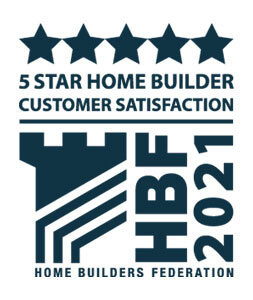Eco-friendly features to look for in new-build homes
Posted on September 4, 2019 | InformationIf you’re in the market for a new house, make sure you check its eco credentials!
With climate change high on the global agenda, we are all being encouraged to reflect on how our lives impact the planet and to look at ways of making more sustainable choices – from the groceries we buy to the journeys we make. And while cutting single-use plastics and reducing car journeys, are sensible strategies, we can make an even bigger difference by considering the eco credentials of our homes.
If you’re in the market for a new home, it’s worth looking into individual developers’ policies on environmental and energy issues. For instance, homes that are poorly insulated or inefficiently heated will use much more energy than well-designed homes, costing more to run and using more of the planet’s resources. New houses must conform to minimum insulation standards, but there can be significant differences in some housebuilders’ approaches, so look out for developments that build in extra eco features and compare specifications carefully before taking the plunge.
Insulation
Russell Armer homes are designed using a ‘fabric first’ approach to energy efficiency. In practice, this means that all elements of the building are insulated to a higher level than the minimum standards required by Building Regulations. Air leakage and thermal bridging are also key to retaining heat and are carefully considered. Good insulation is key to your home’s energy performance so check its credentials before making your move.
Water conservation
Installing systems to help you conserve water can reduce your water consumption and cut down energy usage. Restricted-flow taps and shower heads, as well as A-rated appliances like as dishwashers and washing machines, can also help you save water with little effort. At Russell Armer, we install dual flush WCs and calculate water usage to be better than the optional Building Regulations requirements – without compromising on bath size!
Smart technology
A smart home can automatically reduce your home’s energy consumption. For instance, smart thermostats can regulate the temperature in your home according to your daily routine to avoid wasting heat when you’re not around. Russell Armer homes are fitted with A-rated zoned heating systems, with thermostatic valves to radiators and A-rated appliances are installed as standard.
Lighting and electricity
Making the most of natural light reduces the need for artificial lighting, so it’s worth assessing the natural light levels in any new home. All internal lights should be fitted with low energy bulbs, whether traditional bayonet pendant fittings or LED recessed downlighters. As we’re all likely to be considering a transition to hybrid or electric cars in the future, you may want to consider whether your new home comes with the cabling needed to fit fast-charge points for electric vehicles – we’re already fitting these on some sites.
A greener environment
Check out whether your developer has given ample consideration to the gardens and communal spaces around your prospective home. Has a landscape strategy been implemented to support biodiversity, recreation and landscape character with areas of native planting that will encourage the flora and fauna that’s so vital to our ecology? Are there additional measures that help to support the natural environment? For example, Russell Armer has begun to incorporate ‘hedgehog highways’ to allow these endangered mammals to pass freely between gardens, as well as swift boxes to encourage nesting.
Sustainable drainage
With floods becoming more common in the UK, it’s important to consider whether new housing developments have made provision for all likely weather events. As far as possible, the drainage of surface water should mimic natural infiltration processes, reducing the pressure on existing wastewater infrastructure. This should include provision for storing and discharging water in a controlled way – into local rivers, for example – as well as the use of permeable paving to parking areas. Soakaways may be used to provide additional surface water storage during high rainfall events.
Supporting communities
It’s worth checking out developers’ local credentials. Reputable regional builders prioritise the local sourcing of materials, as well as employing and training local tradesmen and subcontractors, plus investing and putting back into the communities in which developments are built. Russell Armer endeavours to forge positive links with residents in local communities from the earliest stages of development, canvassing views and addressing any concerns through meetings and forums.
Travel options
If you’d like to reduce your reliance on cars, consider whether a development incorporates footpaths and cycleways that offer easy access to local amenities and if there’s a handy bus route for longer journeys. A good developer may also invest in preparing a special residential travel plan on larger sites to offer information on limiting vehicle use.
No two developers will approach new-build homes in the same way, so it pays to do your homework before taking the plunge. At Russell Armer you’ll find that we always go the extra mile by specifying finishes, fittings and construction techniques that exceed minimum standards, providing buyers with safe, comfortable and energy-efficient homes fit for the future.

